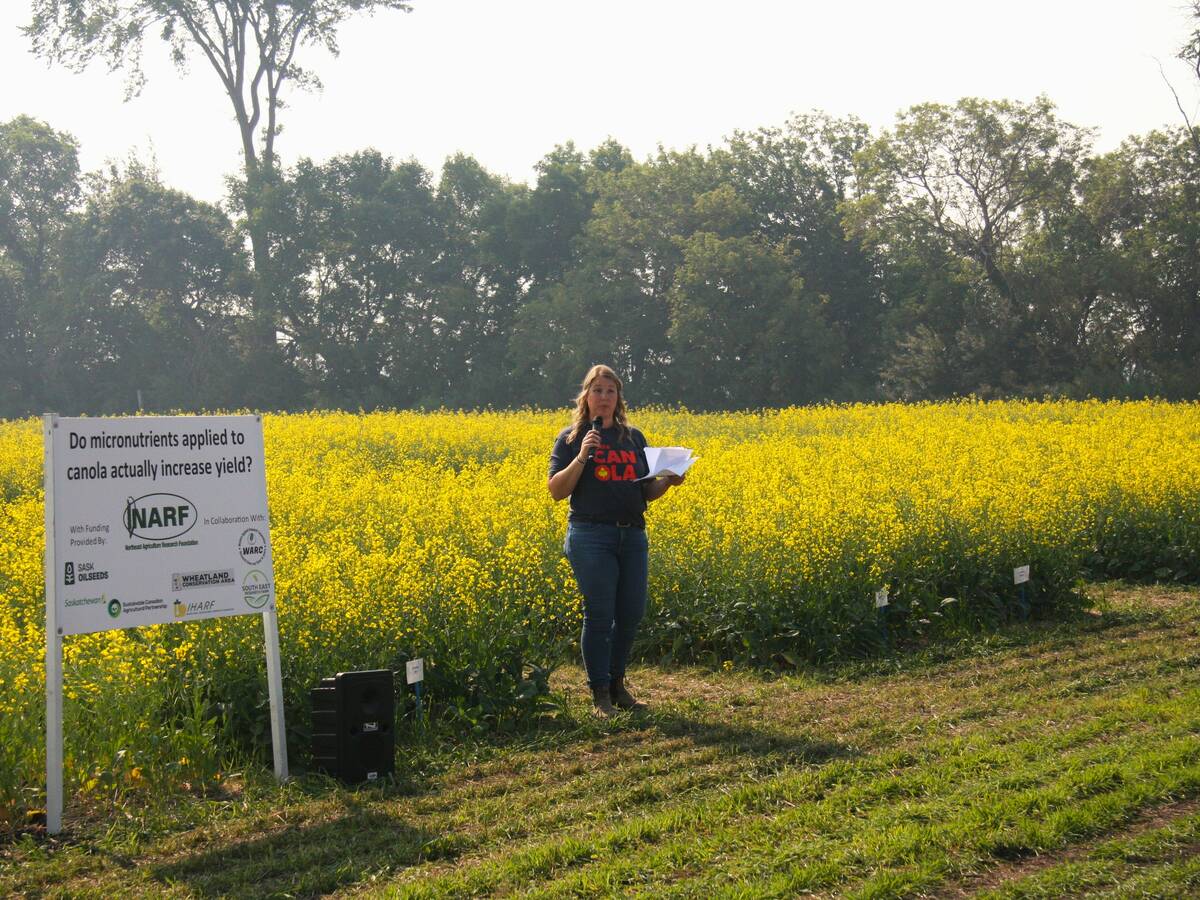Glacier FarmMedia – Applications of nitrogen, phosphorous and potassium are commonplace for grain producers and play a key role for plant growth.
However, in recent years, new products have been claiming to provide micronutrients and are being marketed to producers who want a boost.
These products and claims were the motivation for a SaskOilseeds-funded project investigating micronutrients, looking specifically at boron, copper and zinc within canola crops.
Read Also

Agritechnica Day 2: The future of tractor power, building quicker crop apps and large farms and tech
Agritechnica Day 2: The future of tractor power, building quicker crop apps with Syngenta and large farms and tech
Kaeley Kindrachuk, a canola extension specialist with SaskOilseeds presented the ongoing trial at the Northeast Agriculture Reseach Foundation (NARF) field day in mid-July in Melfort, Sask.
“We wanted to look at whether or not micronutrients increase yield,” she said.
“But we really wanted to demonstrate the yield and quality response of canola to in-furrow and foliar applications of different micronutrients in different parts of the province.”
NARF is one of five trial sites across Saskatchewan, with others at research farms near Scott, Swift Current, Redvers and Indian Head.
The researchers hope the variety of locations will help them compare results in different soil conditions becauses micronutrients could be deficient in sandy soils, high organic matter soils and soils with high pH.
Boron is important for plant metabolism and pollen production, and has been the most researched micronutrient in canola.
Copper has also been well researched, and it’s suggested that if soil has low copper, polyps will form on the roots. It’s also been noted that copper can have a positive effect on yield, but only when the soil was showing deficiency and if there was manganese present in the soil.
However, when it comes to zinc, very little research has been done.
Kindrachuk said that while it’s uncommon to see a zinc deficiency in canola, if a soil’s pH is high and there have been high rates of phosphorous applied over the years, these two factors could inhibt zinc “translocation.”
The Melfort site is low in boron, while Indian Head is low in zinc and Swift Current is low in zinc and boron.
The study uses seven treatments: a control plot, in-furrow application of each micronutrient and a foliar application of each.
Kindrachuk said the plot had filled in well and was looking good following the rain that the area had recently received.
Key results of the first year will be analyzed in later winter or early spring.
















